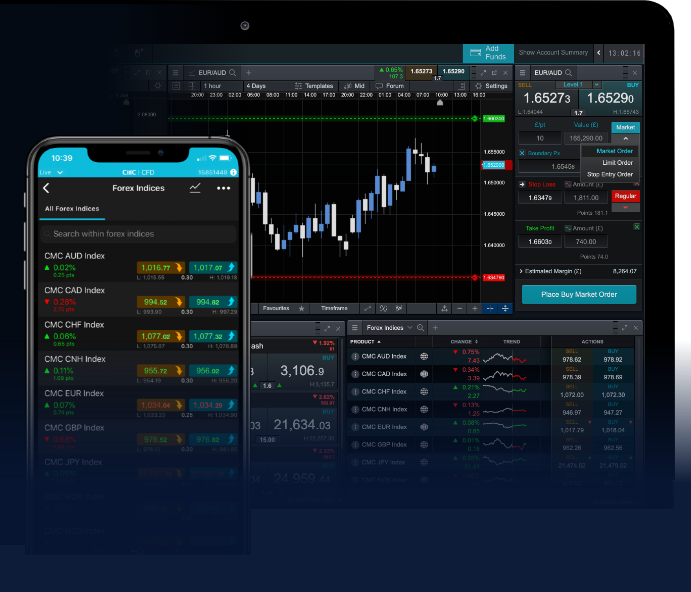
The Ultimate Guide to Online Forex Trading
Forex trading, also known as foreign exchange trading, is one of the most exciting and potentially lucrative ways to invest in the financial markets. With the advent of online trading platforms, anyone with an internet connection can participate in currency trading. In this article, we will delve into the essentials of online forex trading, including how to get started, key strategies, and tips for success, while also mentioning reliable brokers like trading forex online Jordan Brokers that can assist new traders.
What is Forex Trading?
Forex trading involves the buying and selling of currencies in the foreign exchange market with the aim of making a profit. Unlike stocks, forex trading occurs 24 hours a day during the weekdays, making it a dynamic environment that attracts millions of traders globally. The forex market is known for its high liquidity, which means that large amounts of money can be moved quickly without affecting the currency’s price.
How the Forex Market Works
The forex market is decentralized, meaning that there is no central exchange where transactions take place. Instead, forex trading occurs through a network of banks, brokers, and financial institutions. Transactions happen electronically over-the-counter (OTC), allowing traders to buy and sell currencies via online trading platforms.
Getting Started with Online Forex Trading
For those new to forex trading, here are key steps to get started:
1. Choose a Reliable Broker
Selecting a trustworthy broker is critical to your trading success. Look for brokers who are regulated by financial authorities, have a good reputation, and offer low spreads and commissions. Platforms like Jordan Brokers can provide you with useful tools and customer support to enhance your trading experience.
2. Open a Trading Account
Once you’ve selected a broker, you will need to open a trading account. There are different types of accounts available, including standard accounts, mini accounts, and VIP accounts, depending on your trading volume and experience level. Ensure that you understand the terms associated with your account.
3. Fund Your Account
To start trading, you will need to deposit funds into your trading account. This can typically be done through various methods such as bank transfers, credit/debit cards, or e-wallets. Make sure to understand any fees that might be associated with the deposit methods.
4. Use a Demo Account
Before diving into live trading, it’s wise to practice with a demo account. This allows you to familiarize yourself with the trading platform and develop your trading skills without risking real money. Most brokers offer demo accounts with virtual funds for you to practice trading strategies.
Understanding Forex Trading Strategies

To succeed in forex trading, it’s essential to employ a solid trading strategy. Various strategies cater to different trading styles and risk tolerances. Here are a few popular approaches:
1. Day Trading
Day trading involves making trades within the same day, aiming to capitalize on small price movements. Traders who adopt this strategy need to monitor the market closely and make quick decisions.
2. Swing Trading
Swing traders hold positions for several days or weeks to profit from expected price swings. This strategy requires less time commitment than day trading, making it suitable for those who cannot monitor the market constantly.
3. Scalping
Scalping is a strategy that involves making numerous small trades throughout the day to accumulate profits. Scalpers look for small price changes and execute many trades to maximize their returns.
4. Position Trading
This longer-term strategy involves holding onto trades for weeks, months, or even years. Position traders generally rely on fundamental analysis to make their trading decisions rather than focusing on short-term price fluctuations.
Risk Management in Forex Trading
Managing risk is crucial when trading forex. Successful traders know that losses are part of trading and take necessary measures to protect their capital:
1. Use Stop-Loss Orders
Implementing stop-loss orders can help limit your losses by automatically closing a position when it reaches a predetermined price. This tool is essential for protecting your trading account from significant drawdowns.
2. Determine Your Risk-to-Reward Ratio
Understanding your risk-to-reward ratio helps you evaluate whether a trade is worth taking. Traders may use a 1:2 or 1:3 ratio, meaning they are willing to risk a certain amount of money to potentially earn two or three times that amount.
3. Diversify Your Trades
Diversifying your portfolio by trading various currency pairs can mitigate risk. By not putting all your investment into one trade, you reduce the impact of a single loss on your overall capital.
Staying Informed and Continuing Education
Forex trading is a constantly evolving landscape. Successful traders remain informed about market news and economic indicators that influence currency values. Participate in online forums, attend webinars, and keep up with financial news to enhance your understanding of the market.
Conclusion
Online forex trading offers an exciting opportunity for individuals looking to invest in the financial markets. By understanding the basics, choosing a reliable broker, developing a sound trading strategy, and implementing proper risk management techniques, you can navigate the forex market with confidence. Remember, consistent education and experience are key to long-term success in forex trading. Start your journey today and consider exploring platforms like Jordan Brokers for your trading needs.
Leave a Reply